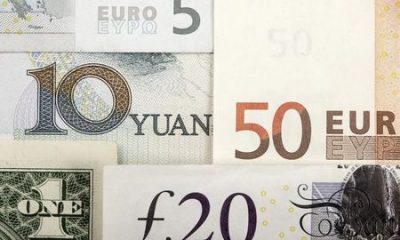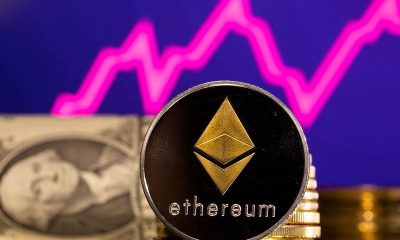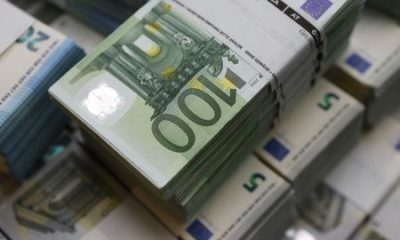Forex
Euro, pound edge up at start of busy week ahead for investors

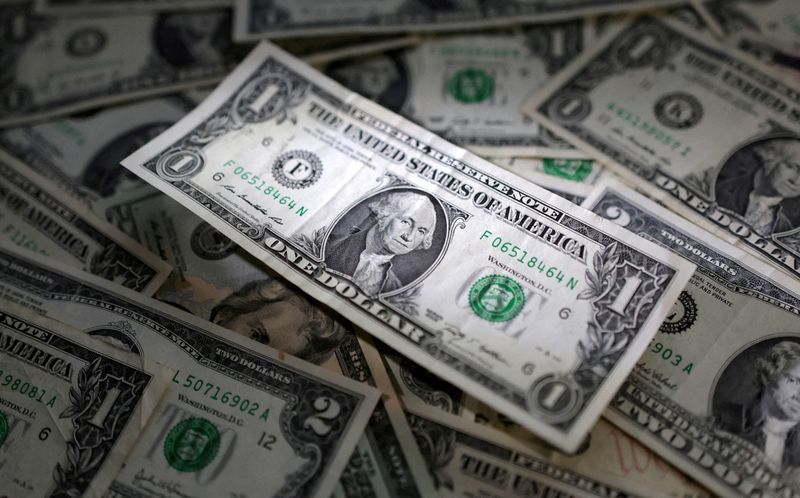
© Reuters. FILE PHOTO: U.S. dollar banknotes are seen in this illustration taken March 10, 2023. REUTERS/Dado Ruvic/Illustration/File Photo
By Kevin Buckland and Alun John
TOKYO/LONDON (Reuters) -The U.S. dollar weakened slightly on Monday, at the start of an action-packed week for markets with Britain’s budget, a European Central Bank meeting, U.S. jobs data and important political moments in both China and the U.S. all due.
Eyes were also on , which rose to a more than two-year peak above $65,000 after a quiet weekend, pushed higher in recent weeks by big flows into cryptocurrency exchange-traded funds, most notably in the United States.
The euro rose 0.13% to $1.08, sterling gained 0.19% to $1.2677 and the Japanese yen fluctuated around the closely watched 150 per dollar level. The dollar was last up 0.20% at 150.43 yen.
That left the – which measures the currency against six major peers – flat at 103.82, oscillating narrowly in the bottom half of its 103.43-104.97 range of the past month.
“It’s going to be a busy week ahead for ‘event risk’ in the U.S. and Europe, which could certainly trigger some pick-up in volatility from the current very low levels,” said Lee Hardman, senior currency analyst at MUFG.
He added there were reasons why the major events could, in isolation, each leave markets unmoved.
In the United States, Federal Reserve Chair Jerome Powell testifies before lawmakers on Wednesday and Thursday, and then there is U.S payrolls data on Friday, with forecasts pointing to a still-solid rise of 200,000 after January’s barnstorming 353,000 jump.
This week also sees “Super Tuesday”, the biggest day in the calendar of U.S. presidential primaries.
“Payrolls could be the bigger mover as Powell is likely comfortable with current market pricing for Fed cuts, while if we get another strong payrolls after the last blowout report that could affect market expectations (for Fed policy),” Hardman said.
RATE EXPECTATIONS
At the start of 2024, markets were pricing in substantial interest rate cuts early this year, but traders have since reduced such bets.
Pricing in derivatives markets now reflect expectations the first Fed cut will come in June, with three to four 25 basis point cuts this year, not far from the Fed’s projections published in December.
As expectations for other central banks, notably the European Central Bank and Bank of England, have moved in near lockstep, currency volatility – partly dependent on changing interest rate differentials – has been strikingly low, and is at its lowest level since the start of the war in Ukraine.
The British budget is due on Wednesday, and Finance Minister Jeremy Hunt has been trying to dampen speculation about big pre-election tax cuts. The European Central Bank (ECB) meets on Thursday.
Most ECB policymakers have been cautious about suggesting that they will be cutting interest rates soon.
Hardman said last week’s stronger-than-expected euro zone inflation data meant the ECB would be unlikely to say anything at this week’s meeting to cause markets to bring forward expectations of the first rate cut, currently seen in June.
The Swiss franc jumped briefly after Swiss February inflation came in a fraction higher than expected at 1.2% compared to the previous year, though still lower than January’s level and well within the Swiss National Bank’s 0-2% target range.
The currency gave back some of those knee-jerk gains and versus the franc, the dollar was up 0.09% at 0.8837 francs and the euro gained 0.23% to 0.9594..
The Australian dollar was down a whisker at $0.6524 with traders awaiting local GDP data Wednesday. Given Australia’s close economic links with China, the currency will also be shaped by China’s annual parliament meeting which begins Tuesday, and at which authorities will announce the GDP goal and are expected to unveil moderate economic stimulus plans.
Forex
BofA notes broad USD sell-off on positive US data

Bank of America reported that investors had broadly sold off the US dollar last week, influenced by slightly positive economic indicators from the United States. The movement came in response to somewhat encouraging US inflation data and softer-than-expected retail sales figures.
According to the Bank of America, the sell-off of the US dollar was widespread, with real money investors now holding a slightly short position on the currency. Despite this trend, hedge funds’ long positions on the US dollar are still near the highest levels seen in the past five years.
In the foreign exchange markets, the Australian dollar (AUD) saw increased interest, with investors continuing to build their long positions. Conversely, short positions in the Swedish krona (SEK) and the New Zealand dollar (NZD) experienced a slight reduction.
Emerging market currencies also attracted attention, with buying activity focused particularly on regions such as Europe, the Middle East, and Africa (EMEA), as well as Asia. The Turkish lira (TRY) was highlighted as a currency where both hedge funds and emerging market investors increased their buying across the board.
This article was generated with the support of AI and reviewed by an editor. For more information see our T&C.
Forex
Dollar edges down, ether’s 2-month high fuels crypto rally
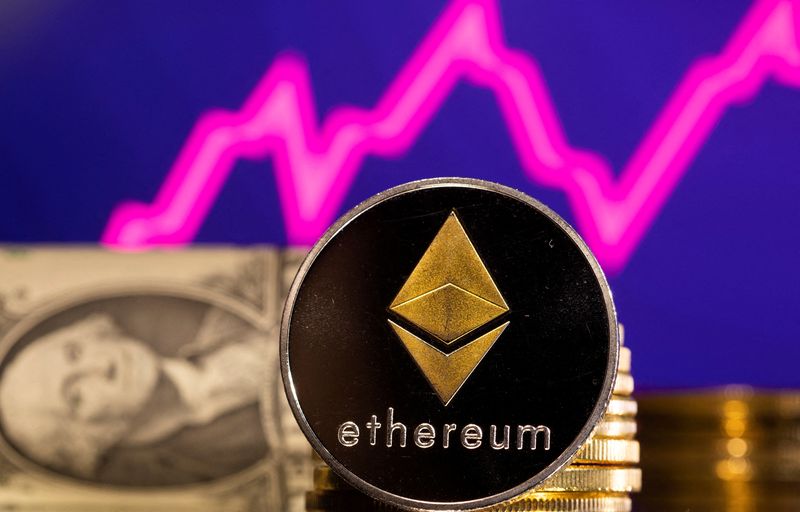
By Stefano Rebaudo
(Reuters) -The dollar struggled for direction on Tuesday as investors stuck to their views for the expected timing of Federal Reserve monetary easing this year.
Ether was set for its largest two-day gain in nearly two years and bitcoin approached a record high on speculation about the outcome of applications for U.S. spot exchange-traded funds that would track the world’s second-biggest cryptocurrency.
The euro rose 0.12% to $1.0869.
Investors are awaiting Thursday’s data from the European Central Bank (ECB) negotiated wage tracker and the euro zone Purchasing Managers’ Index (PMI) which could provide further clues about the monetary cycle in the euro area.
Meanwhile, with little on the U.S. economic data calendar this week to guide the direction of the dollar, investors’ focus is turning to a slew of Federal Reserve speakers.
Several officials on Monday called for continued policy caution, even after data last week showed an easing in consumer price pressures in April.
Money markets are now pricing in 42 basis points (bps) of Fed rate cuts in 2024 — implying one 25 bps reduction and a 68% chance of a second move by December — from fully pricing in two cuts before recent hawkish comments from central bank officials.
They are betting on 63 bps of ECB rate cuts in 2024 from around 73 bps in mid-May.
Some analysts highlighted that Atlanta Fed President Raphael Bostic made dollar-positive remarks when he cautioned that the Fed’s benchmark rate would likely end up at a higher steady rate than in the past decade.
“We expect the dollar to weaken after the first rate cut (by the Fed), which markets now price in September, but we also see the risk of a delay in the monetary easing with the Fed making the first move in December,” said Athanasios Vamvakidis, global head of forex strategy at BofA.
Against a basket of currencies, the dollar dropped 0.08% at 104.52.
“We see risks towards far greater divergence favouring the Fed,” argued George Saravelos, global head of forex research at Deutsche Bank, after noting remarkable symmetry in monetary policy that is still priced in by markets.
“Combined with the status of high-yielding currency, this provides a powerful underpinning to USD strength,” he added.
On the data front, the focus will now be on the Personal Consumption Expenditures (PCE) price index report – the Fed’s preferred gauge of inflation – due on May 31.
In the cryptoverse, ether jumped 6.2% to $3.715.60 after hitting $3,730.70, its highest level since March 16. It surged nearly 14% in the previous session – its largest daily percentage gain since November 2022.
broke above the $70,000 level and was last trading 2% higher at $71,128. It hit its all-time high at $73,803.25 in March.
The jump in cryptocurrencies also has “to do with that core (U.S.) inflation data last week that’s boosted risk sentiment and obviously brought rate cuts back into play,” said Tony Sycamore, a market analyst at IG.
Against the yen, the dollar dropped 0.06% to 156.20, not far from its lowest in over 30 years at around 160.
Fears of intervention from Japanese authorities deterred traders from pushing the yen to new lows. However, the still-stark interest rate differentials between the U.S. and Japan maintained the appeal of the yen as a funding currency.
“Forex interventions can buy some time and temporarily avoid an excessive depreciation of the yen, but if the Fed starts cutting later than the markets currently expect, it can become challenging for Japanese authorities to keep the yen below certain levels,” BofA’s Vamvakidis argued.
The Canadian dollar was flat at $1.3627 ahead of inflation data later in the session.
“We have called for a Bank of Canada (BoC) rate cut in June for the past couple of months, and are expecting that to make the increasingly less attractive compared to other commodity currencies,” said Francesco Pesole strategist at ING.
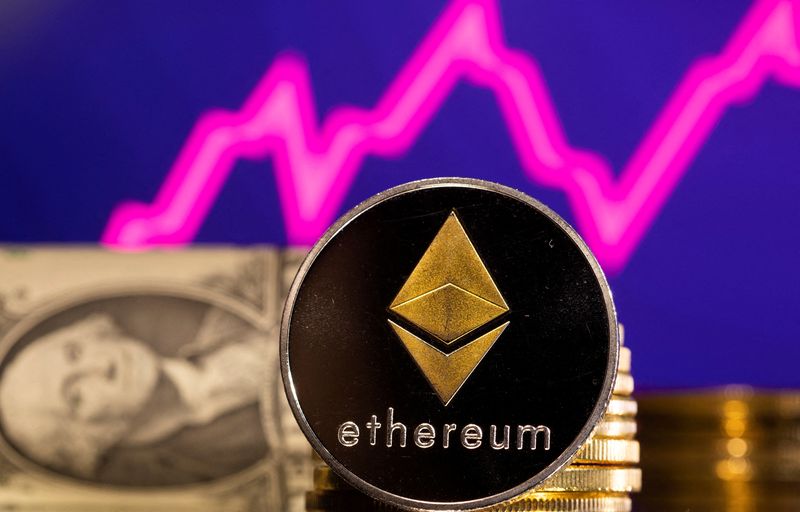
The BoC would be willing to cut interest rates three times ahead of the Fed first move, according to a Reuters poll.
The New Zealand dollar fell 0.03% to $0.6103, before the Reserve Bank of New Zealand policy meeting which is expected to hold its key interest rate at 5.50% on Wednesday.
Forex
EUR/USD rally expected to persist, says BofA
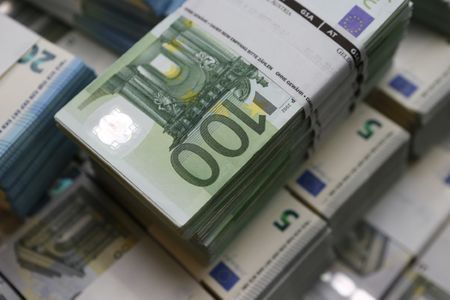
Bank of America (BofA) analysts provided insights into currency market trends, noting a significant rally in the pair last week. The surge was attributed to a subdued US Consumer Price Index (CPI) report. BofA’s signals indicate that the upward trend for the euro against the US dollar is likely to continue.
The bank’s analysis pointed to option flows that show a sustained demand for USD puts, suggesting that investors are betting on a weaker dollar. Additionally, BofA’s technical matrix revealed signals of a continuing downtrend for the USD when compared to major currencies such as the euro (EUR), the British pound (GBP), and the New Zealand dollar (NZD).
Despite the positive trend for the EURUSD, BofA cautioned that the momentum seen in the risk rally might not be as strong moving forward. The analysts observed that the (DXY), which measures the dollar’s strength against a basket of currencies, managed to close above its 200-day Simple Moving Average (SMA), an indication of a potential slowing in the dollar’s decline.
Furthermore, BofA’s economists have noted an absence of significant market-moving events from US economic data expected this week. Without new bearish catalysts for the USD, the currency’s downtrend might not maintain the same pace as observed last week.
This article was generated with the support of AI and reviewed by an editor. For more information see our T&C.

 Forex2 years ago
Forex2 years agoForex Today: the dollar is gaining strength amid gloomy sentiment at the start of the Fed’s week

 Forex2 years ago
Forex2 years agoHow is the Australian dollar doing today?

 Forex1 year ago
Forex1 year agoUnbiased review of Pocket Option broker

 Forex2 years ago
Forex2 years agoDollar to pound sterling exchange rate today: Pound plummeted to its lowest since 1985

 Cryptocurrency2 years ago
Cryptocurrency2 years agoWhat happened in the crypto market – current events today

 World2 years ago
World2 years agoWhy are modern video games an art form?

 Stock Markets2 years ago
Stock Markets2 years agoMorgan Stanley: bear market rally to continue

 Economy2 years ago
Economy2 years agoCrude oil tankers double in price due to EU anti-Russian sanctions

